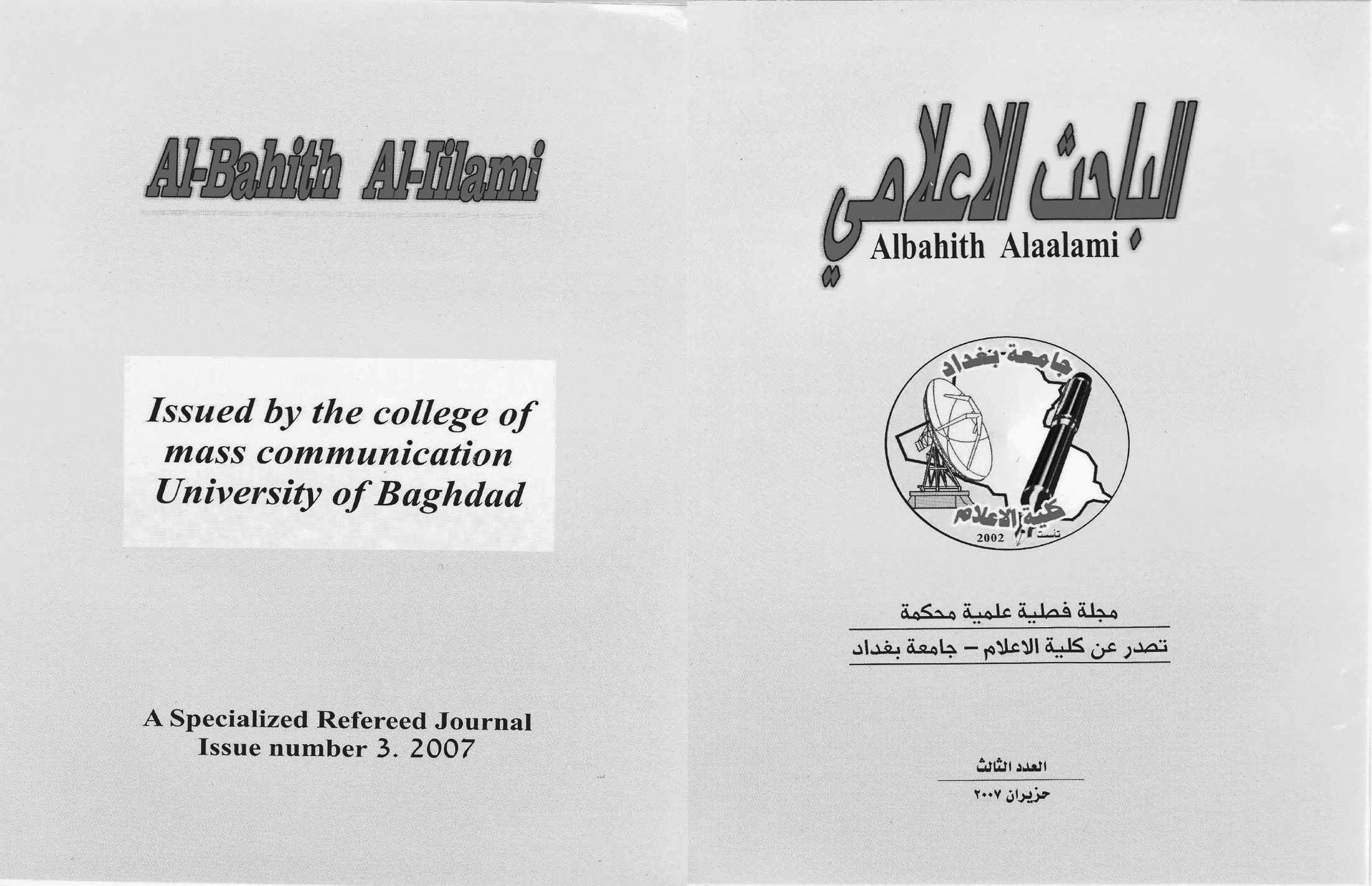PHARAOH'S CHARACTER BETWEEN THE QUR'ANIC TEXT AND THE ARABIC NOVEL
(Naguib Mahfouz's Pharaonic Novels as a Model)
DOI:
https://doi.org/10.33282/abaa.v1i3.460Keywords:
Pharaoh, Character, Arabic novelsAbstract
The Character is one of the elements of Storytelling, as it is the center of the plot, making it the basis on which the talk is about. The talk is the portrayal of the character while they’re acting; the novelist presents the character by interacting with the events, and the extent of the negative and positive appearing impact on the character. It should be noted that everyone has two personalities or more, each one appearing in a different position or situation. For instance, a man can be a father, a lover, an employee, a son or anyone else .. in another position, he might be a master, and in another a looser begging for the mercy of his humiliator, and sometimes he can show weakness to the one he loves, or show strength to his enemies, therefore the novelists' interest was to show the special side of the characters after focusing on them and highlighting some of their hidden traits. And in order to understand the characters, they must convince us with their presence and their impact on the events of the novel. After this, we should refer to Pharaoh’s character; a real character, not a fictional one, especially that he had greatly influenced the evolvement of events into sometimes predictable outcomes, because the reader has already a historical reference about him, and the novelist was able to have the reader’s attention after realizing he’s understanding the personality, and conducting his ideas relative to the time he’s living rather than the era where Pharaoh lived, thus, these ideas and issues may seem separate from the society in which Pharaoh lived.
The Theoretical research included two main axes to construct the character: first, the physical aspect. Second: its behaviour.
We conclude that Najeeb Mahfuz had widened his field of vision from all that is individual and subjective, to a social and a lifelike view that is based on the artist’s deep contemplation of life, and his eagerness to reach the essence of things, using to get there, a human model of a character that is an example of arrogance and might as mentioned in the Holy Quran.
And why the character of Pharaoh ? Because it is common between readers that Pharaoh is a mighty arrogant, so the novelist wanted this to be his starting point from Pharaoh’s individuality until he speaks with his voice through this character, saying that the great state is based on Pharaoh the great, and that the greatness of Pharaoh cannot exist without dedicating his love to his people to the extent of sacrificing himself for the sake of them and his homeland. And if we look at the Pharaonic novels of Najeeb Mahfuz ( Khufu's Wisdom
) written in 1939, we’ll find that he defined the traits of the king who feels glorious when his people remind him that he is one of the greatest kings. Then he wrote ( Rhadopis of Nubia ) in 1943, where he described a vain king whose destiny was being killed by his people; all because he didn’t consider the destiny of his predecessors, and followed his pleasures, so Mahfuz used to say: “ This is the punishment of the person who is unjust with his people and cares only about his own interests and well being. Then we find that Mahfuz wrote ( Thebes at War ) in 1944, where he gives a different picture of Pharaoh than the two mentioned above; in the first one Pharaoh defends his throne along his life with all of his power and wealth, whereas surrenders to his destiny and accepts death in the second one. But in the third one, Pharaoh started to build himself physically and mentally since childhood in order to be eligible for this great task.
This is how Mahfuz fulfilled the condition of the mask technique in which the novelist is more contemplating than the original character from which the writer derived his idea, thus the creative expresses his experience in life and his creative view of things bringing all of that to the reality in which the recipient lives.
Downloads
References
-2 ﺘﺎﺝ ﺍﻟﻌﺭﻭﺱ ﻤﻥ ﺠﻭﺍﻫﺭ ﺍﻟﻘﺎﻤﻭﺱ : ٩ / ٣٠٠.
-3 ﺍﻟﺠﺎﻤﻊ ﻷﺤﻜﺎﻡ ﺍﻟﻘﺭﺁﻥ : ١/ ٣٨٣.
-4 ﻴﻨﻅﺭ ﺍﻟﻤﺼﺩﺭ ﻨﻔﺴﻪ : ٣٨٥/١.
-5 ﺍﻟﻜﺸﺎﻑ ﻋﻥ ﺤﻘﺎﺌﻕ ﺍﻟﺘﻨﺯﻴل ﻭﻋﻴﻭﻥ ﺍﻻﻗﺎﻭﻴل : ١/٣١٤.
-6 ﻴﻨﻅﺭ ﻤﺼﺭ ﺍﻟﻘﺩﻴﻤﺔ ، ﺴﻠﻴﻡ ﺤﺴﻥ : ١٦٦/١.
-7 ﻤﺼﺭ ﺍﻟﻘﺩﻴﻤﺔ ﺠﻴﻤﺱ ﺒﻴﻜﻲ ، ﺘﺭ : ﻨﺠﻴﺏ ﻤﺤﻔﻭﻅ : ٢٤.
-8 ﺘﺎﺝ ﺍﻟﻌﺭﻭﺱ : ٩ /٣٠١.
-9 ﺠﺎﻤﻊ ﺍﻟﺒﻴﺎﻥ ﻋﻥ ﺘﺄﻭﻴل ﺁﻱ ﺍﻟﻘﺭﺁﻥ : ٢٨ /١٧١.
-10 ﺍﻟﻤﺼﺩﺭ ﻨﻔﺴﻪ : ١ /٢٧٣.
-11 ﺍﻟﻤﺼﺩﺭ ﻨﻔﺴﻪ : ١ /٢٧٢.
-12 ﻴﻭﺴﻑ : ٤٤.
-13 ﺠﺎﻤﻊ ﺍﻟﺒﻴﺎﻥ ﻋﻥ ﺘﺄﻭﻴل ﺁﻱ ﺍﻟﻘﺭﺁﻥ : ٩ /٢٣.
-14 ﻤﻌﺠﻡ ﻤﺼﻁﻠﺤﺎﺕ ﺍﻻﺩﺏ : ﻤﺎﺩﺓ ﺍﻟﻘﻨﺎﻉ ، ﻭﻟﻔﺎﺌﺩﺓ ﻴﻨﻅﺭ ﺍﻟﻘﻨﺎﻉ ﻓﻲ ﺍﻟﺸﻌﺭ ﺍﻟﻌﺭﺒﻲ - ﺩﺭﺍﺴﺔ ﻓﻲ ﺸﻌﺭﺍﻟﺭﻭﺍﺩ ، ﺭﻋﺩ ﺃﺤـﻤﺩ ﻋﻠﻲ ، (ﺭﺴﺎﻟﺔ ﻤﺎﺠﺴﺘﻴﺭ) ، ﺍﻟﺠﺎﻤﻌﺔ ﺍﻟﻤﺴﺘﻨﺼﺭﻴﺔ ، ﻜﻠﻴﺔ ﺍﻵﺩﺍﺏ ، ١٩٩٢ ﻡ ﻭﺍﻟﻘﻨﺎﻉ ﻓﻲ ﺃﺩﺏ ﺃﺒﻲ ﺍﻟﻌﻼﺀ ﺍﻟﻤﻌﺭﻱ ، ﺍﺴﺎﻤﺔ ﻋﺒﺩ ﺍﻟﺼﺎﺤﺏ ﻤﺤﺴﻥ ، (ﺭﺴﺎﻟﺔ ﻤﺎﺠﺴﺘﻴﺭ) ﺍﻟﺠﺎﻤﻌﺔ ﺍﻟﻤﺴﺘﻨﺼﺭﻴﺔ ، ﻜﻠﻴﺔ ﺍﻷﺩﺍﺏ ، ١٩٩٦ ﻡ ، ﻭﺘﻘﻨﻴﺔ ﺍﻟﻘﻨﺎﻉ ﻓﻲ ﻓﻥ ﻤﺎﺭﻭﻥ ﻋﺒﻭﺩ ﺍﻟﻘﺼﺼﻲ ، ﻏﺎﻨﻡ ﻭﺍﺌل ﺃﺒﻭ ﺸﻘﺭ ، ﻤﻁﺒﻌﺔ ﻤﻨﺸﻭﺭﺍﺕ ﺍﻟﻴﻨﺒﻭﻉ ، ﻁﺭﺍﺒﻠﺱ ، ٢٠٠٤ ﻡ.
-15 ﻗﺼﻴﺩﺓ ﺍﻟﻘﻨﺎﻉ ﻓﻲ ﺍﻟﺸﻌﺭ ﺍﻟﻌﺭﺒﻲ : ٤٣.
-16 ﺍﻟﻤﺼﺩﺭ ﻨﻔﺴﻪ : ١١.
-17 ﺠﺎﻤﻊ ﺍﻟﺒﻴﺎﻥ ﻋﻥ ﺘﺄﻭﻴل ﺁﻱ ﺍﻟﻘﺭﺁﻥ : ١٩ /٧٦.
-18 ﻤﺼﺭ ﺍﻟﻘﺩﻴﻤﺔ ، ﺠﻤﻴﺱ ﺒﻴﻜﻲ : ٢٤ - ٢٥.
-19 ﺍﻟﻘﺼﺹ : ٣٨.
-20 ﺍﻟﻘﺼﺹ: ٣٨.
-21 ﻴﻨﻅﺭ : ﺍﻟﺒﻴﺎﻥ ﻋﻥ ﺘﺄﻭﻴل ﺁﻱ ﺍﻟﻘﺭﺁﻥ : ١ / ٢٧٦.
-22 ﺍﻟﻤﺼﺩﺭ ﻨﻔﺴﻪ : ١ / ٢٧٠.
-23 ﺍﻟﻤﺼﺩﺭ ﻨﻔﺴﻪ : ٩ / ٣٨.
-24 ﻓﻥ ﺍﻟﻘﺼﺔ ﺍﻟﻘﺼﻴﺭﺓ : ٣٩.
-25 ﺒﻨﻴﺔ ﺍﻟﺸﻜل ﺍﻟﺭﻭﺍﺌﻲ : ٧٨.
1- Conflicts: 17.
2- Bridal crown from the essence of the dictionary: 9/300.
3- Al-Jami 'for the provisions of the Qur’an: 1/383.
4- The same source is published: 1/385.
5- The disclosure of the facts of the download and the gossip's eyes: 1/314.
6- Egypt denotes the old, Salim Hassan: 1/166.
7- Egypt, Old James Becky, Trat: Naguib Mahfouz: 24.
8- Bride's crown: 9/3011.
9- Collect the statement on the interpretation of the Qur’an: 28/271.
10- The same source: 1/273.
11- The same source: 1/272.
12 Youssef: 44.
13- Collect the statement on the interpretation of the verse of the Qur’an: 9/23.
14- Glossary of terms of literature: the content of contentment, and for the benefit of contentment in Arabic poetry - a study in Shaar Al-Rawad, Raad Ahmad Ali, (Master’s message), Al-Mustansiriya University, Al-Masbaa, Kingdom of Makkah, Kingdom of Makkah, Kingdom of Makkah, Kingdom of Makkah, Kingdom of Makkah, Kingdom of Makkah, Kingdom of Makkah, Kingdom of King Saud Master's message, Al-Mustansiriya University, Faculty of Arts, 1996, and the technique of conviction in the art of Maroon Aboud Al-Qusai, Ghanem Wael Abu Shakr, Al-Yanbu` Press, Tripoli, 2004 AD.
15- Al-Qana`a's poem in Arabic poetry: 43.
16- The same source: 11.
17. Collect the statement on the interpretation of the meaning of the Qur’an: 19/76.
18- Old Egypt, James Becky: 24-25.
19- The Stories: 38.
20- Stories: 38.
21. Denounced the statement on the interpretation of the Qur’an: 1/276.
22- The same source: 1/270.
23- The same source: 9/38.
24- Short Art: 39.
25- The structure of the narrative form: 78.
Downloads
Issue
Section
License
Authors retain copyright and grant the journal right of first publication with the work simultaneously licensed under a Creative Commons Attribution License (CC BY 4.0) that allows sharing the work with recognition of authorship and initial publication in ABBA journal.


















